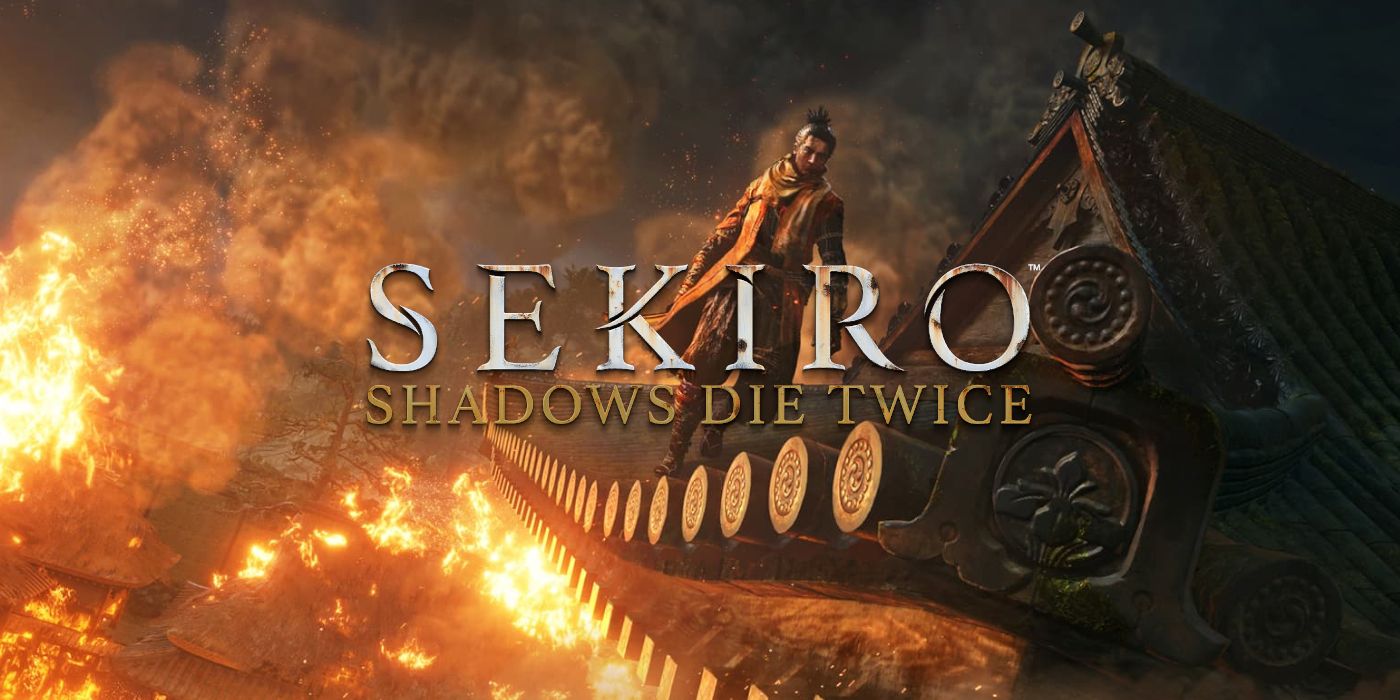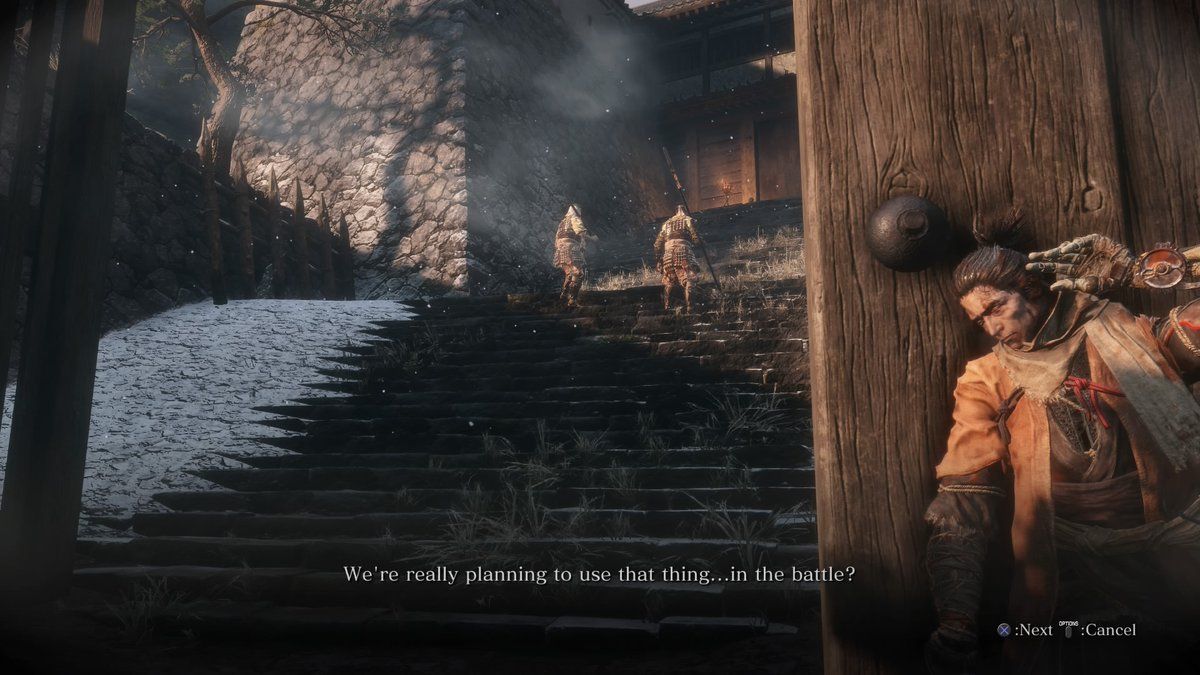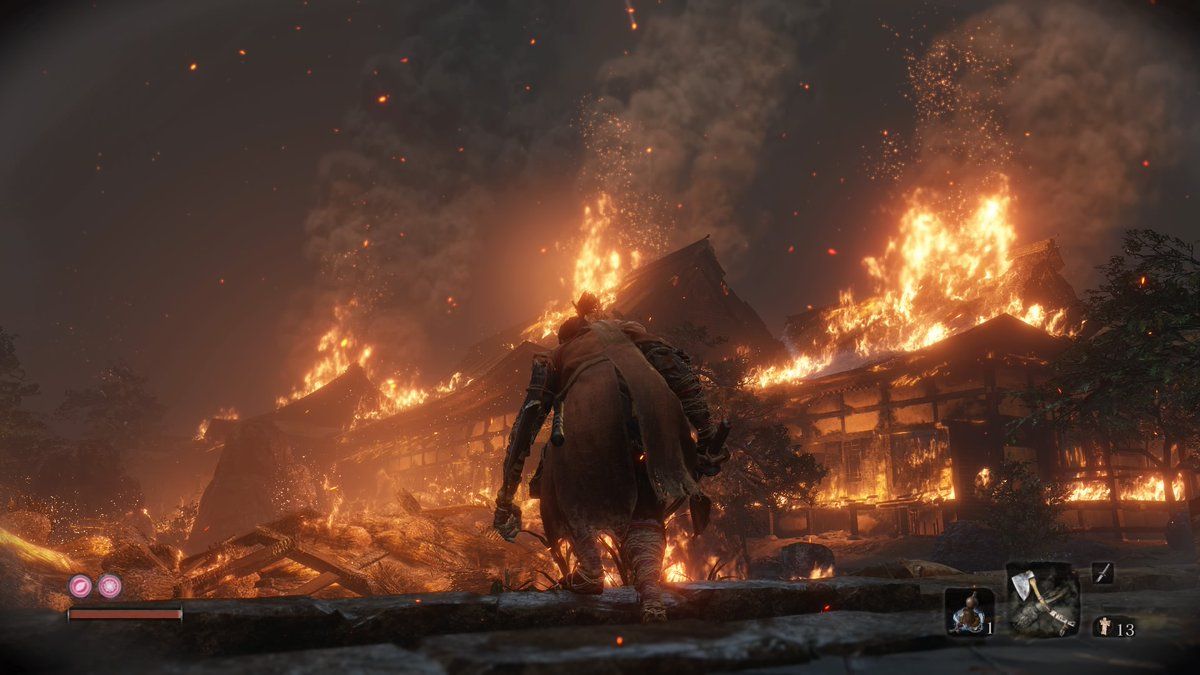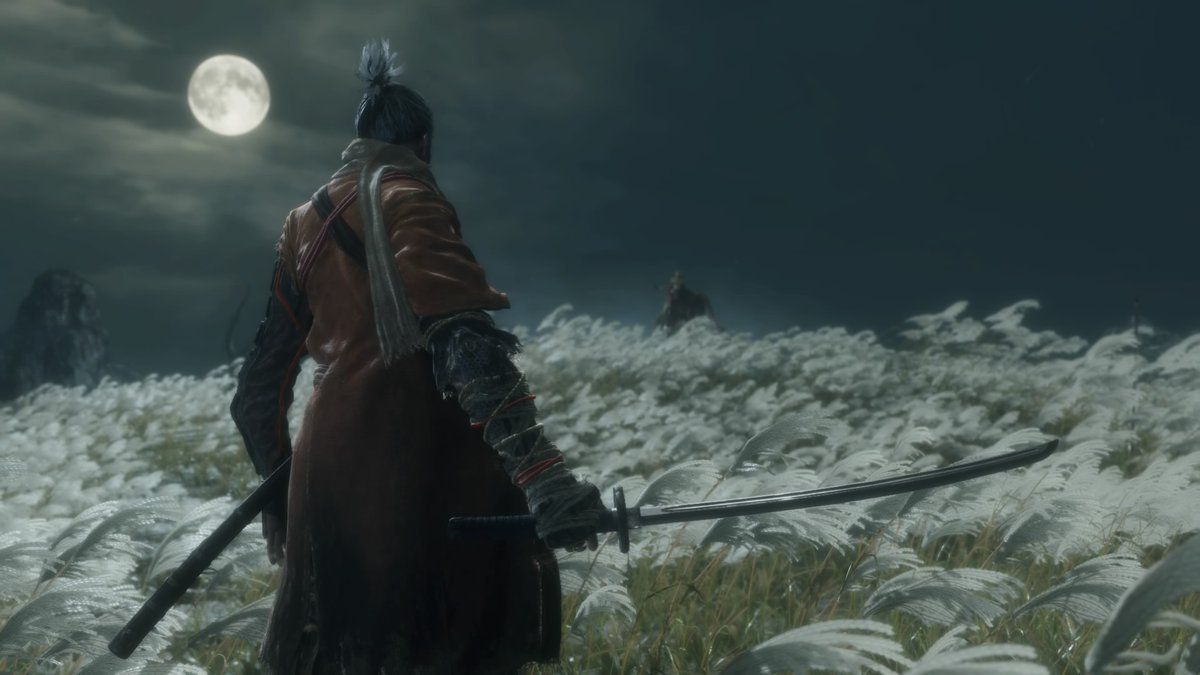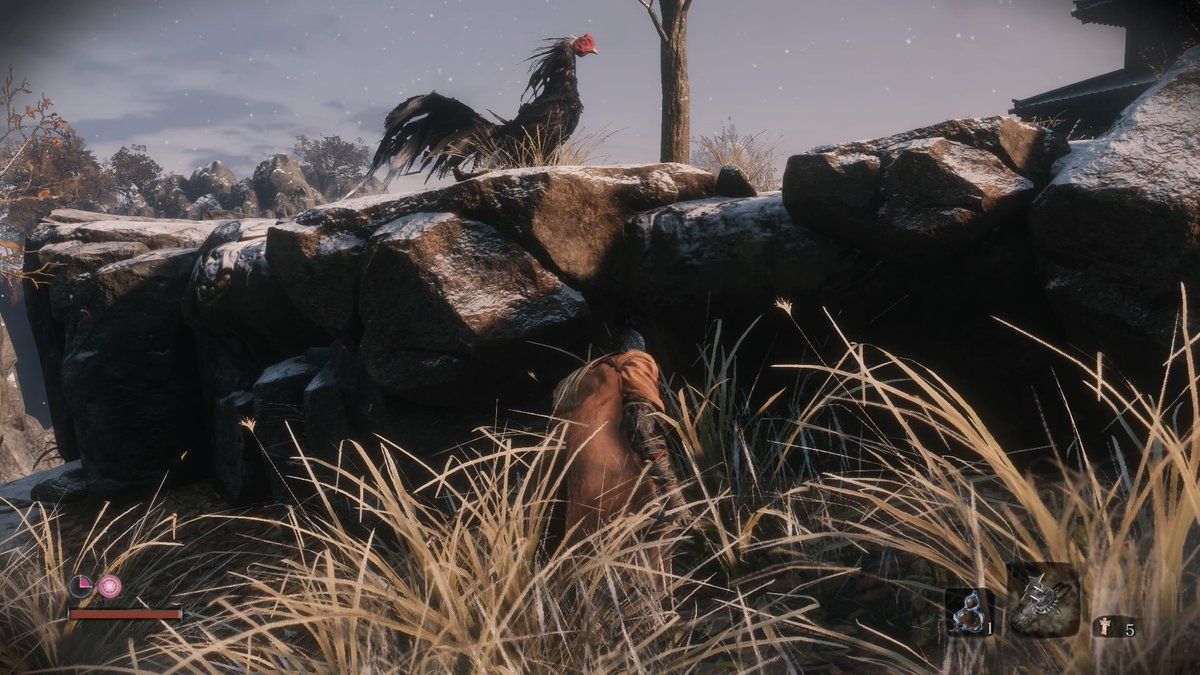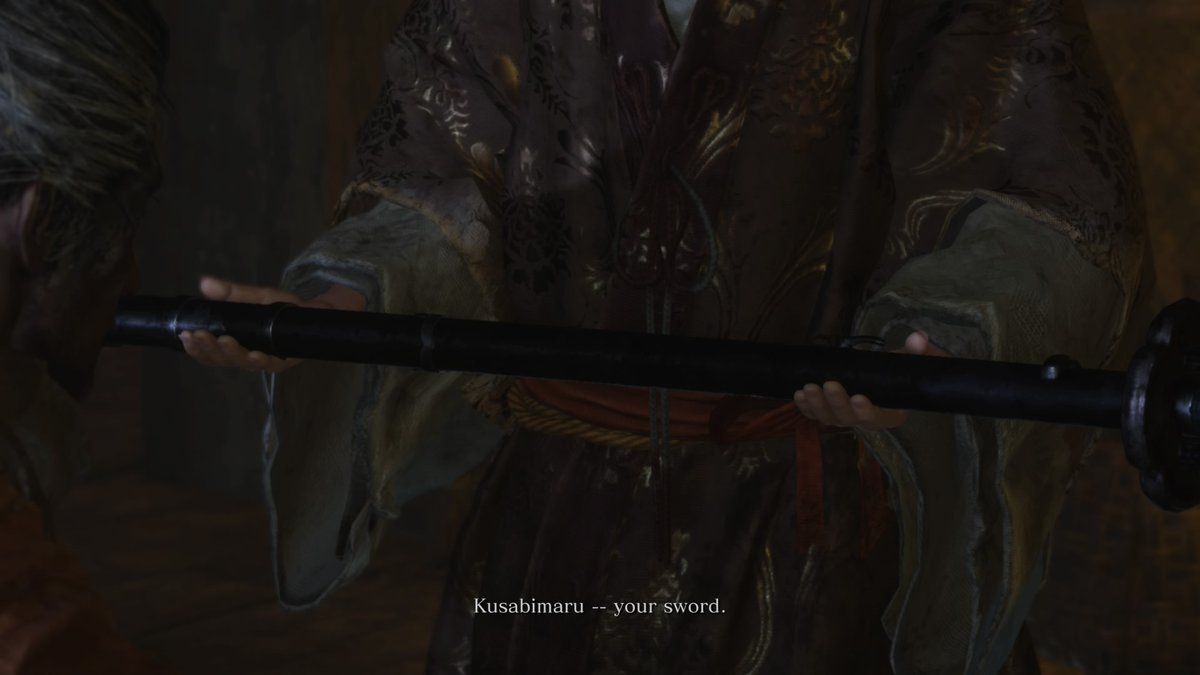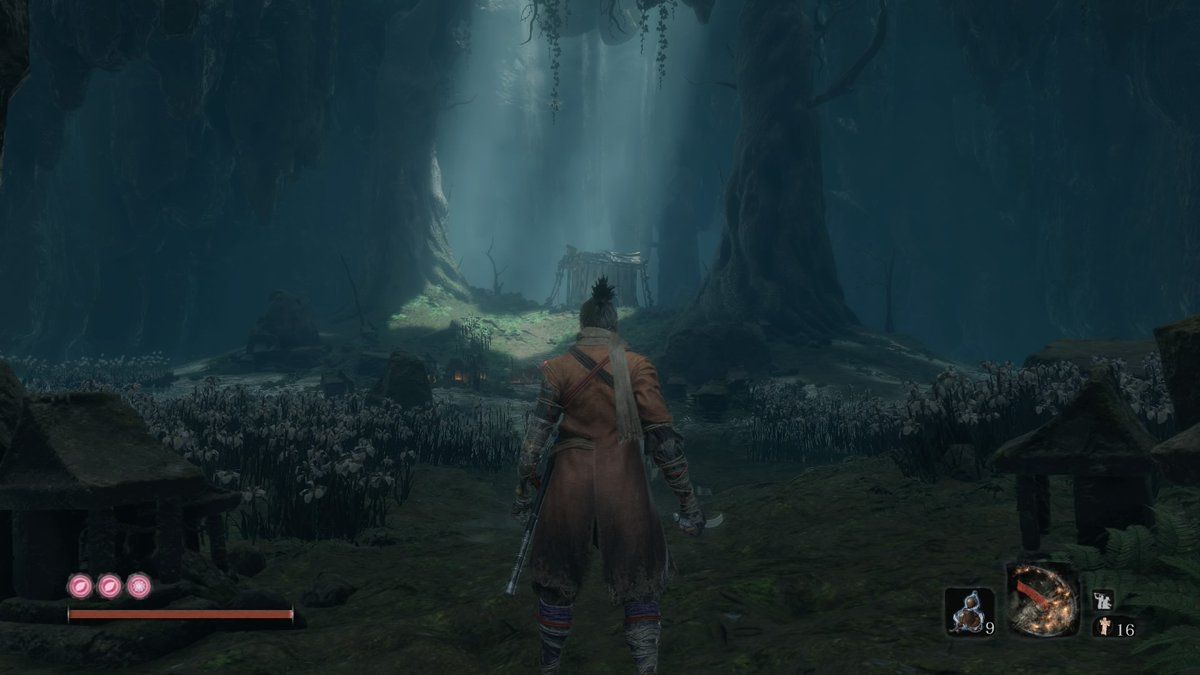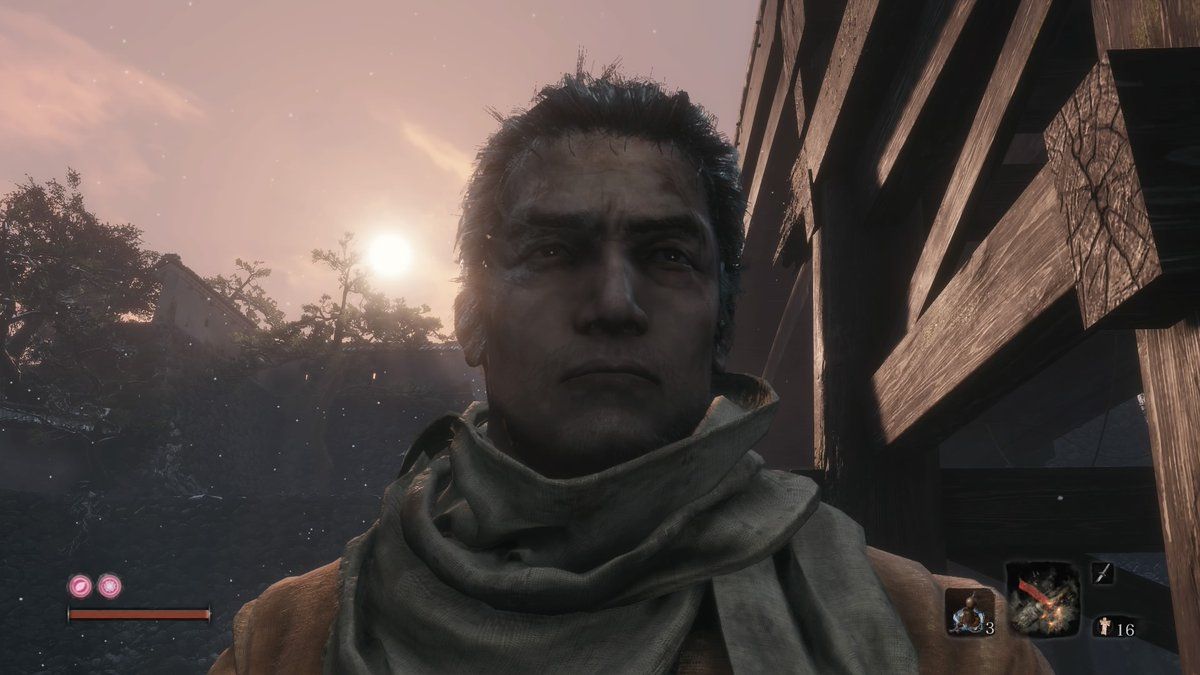From Software's Sekiro: Shadows Die Twice is one of the finest games in their catalog, but it's exceptionally difficult, even by Souls game standards.
It was a decade ago when a PlayStation 3 exclusive by the name of Demon’s Souls, complete with ungainly apostrophe, released to minimal fanfare in North American video game stores. A Western-styled third-person action role-playing game with knights in armor and fire-breathing dragons, it was a slow-burner which would snowball a rabid and ecstatically perplexed fanbase, storming forums with advice, rumors, bellyaching diatribes, and madcap theories, confounded by its mesmerizing challenge and mystery and picking apart its puzzles in due course. The energy which fueled those early Souls pilgrims delivered a significantly stronger release event to mark Dark Souls’ release, a game which has since gone down in best-selling infamy, launching the fervent careers of Twitch streamers, podcasters, and YouTube lore-hounds (some might argue it single-handedly popularized the now-ubiquitous game-specific term “lore”), seducing a budding cult-to-mainstream audience which now sets its sore hands on Sekiro: Shadows Die Twice.
To discuss Sekiro absent of its lineage is practically nonsensical, and to pick apart its exultant reach for a new-yet-familiar experimentation with Souls tropes and expectations without giving ample consideration to those roots is a peculiar undertaking, despite the fact that there inevitably exist approaching players with no awareness of what came before. Players for whom shorthand like “bonfires,” “humanity,” and “bloodstains” — let alone the reverence afforded to maverick series director/auteur Hidetaka Miyazaki — carry no truck whatsoever, something Sekiro seems to anticipate and preempt in its overall novelty.
Related: Déraciné Review: A Dark VR Adventure For Miyazaki Fans
It is somehow both Souls and “not-Souls,” both mother’s milk to the die-hard horde aching for abuse and a unique offering meant to be met on its own terms by the uninitiated. In certain respects, it’s the most ambitious and accessible Souls game ever made, intentions which push it firmly past the fan service Dark Souls 3 mustered and into a genuine watershed moment in contemporary gaming. If this generation of consoles sits staring wide-eyed at its ember-pocked finale, it’s also the perfect setting for Sekiro to hit the stands as its samurai swan song.
Once again, we call on a franchise history: churchgoers can open their books to the tale of Artorias the Abysswalker, one of the Souls series’ most beloved characters, a knight with one functioning arm steadfastly defending the path of destruction from the unaware, sacrificing himself to save his wolf companion. Similarly, Sekiro’s titular protagonist The Wolf’s arm is completely severed in the playable prologue, then replaced by a maudlin sculptor with the “shinobi prosthetic,” a patchwork mechanical limb which grants him a grappling hook and a variety of hot-swap-ready attachments. Sekiro is more agile than any Souls avatar before him, an able guardian pledged to rescue and protect young Lord Kuro, now mired in a deadly extended battle with the warring Ashina clan and gifted with immortal blood that increasingly seems like a curse.
Souls games have always tussled with themes of immortality, equally intended to inform the story and integrate into gameplay, repeatedly reviving the avatar after defeat to try their hand again and again. While this practical threaded aspect has always factored into the narrative, Sekiro leverages it more thoroughly and even intimately than any other, as Kuro infuses his immortal gift to the main character to empower their task of guardianship, a choice which rouses the wrath of other characters embroiled in the drama. Little by little, the over-arching plot of the game communicates how the power of immortality jockeys attention, bitterness, desperation, and agency between its major players, in a way that feels more thoughtful, concentrated, even classical than previous Souls titles.
We’ll get back to that story shortly, but describing Sekiro’s moment-to-moment gameplay is integral to distinguishing it from other Souls titles and, really, from any other games on the market. The basics require a wholesale investment in its combat, internalizing parry and deflect defense maneuvers and timing for even the lowliest scrubs as a base requirement to succeed. The shinobi prosthetic grants a few feasible sidearms — one may give you a thrusting spear, shuriken, or a flamethrower, as well as more esoteric options like mid-combat teleportation — but the meat and potatoes of Sekiro: Shadows Die Twice center on the exact same katana wielded at the start of the game. That sword can deal damage, defend, and turn enemy attacks back on them, but precisely activating its deflect is paramount. A posture gauge continuously fills when your blocks lack that required precision and, though it regenerates in time, a full gauge will leave you completely exposed and staggered to subsequent attacks.
The balance lies in how this sensibility works on both sides, with enemies also beholden to their own posture gauges. Most encounters require a learned understanding of this exchange; in other words, the longer any run-ins with basic enemies take to complete, the arguably worse you’re performing. At the very start of the game and on through its lengthy and savagely challenging finale, enemies are meant to be dispatched quickly, either through head-on duels or stealthy assassinations. Baked into its Souls-informed makeup, Sekiro equally leverages a very deliberate stealth-kill genre play-style, invoking equal portions of the Tenchu series and sacrosanct PlayStation 1 classic Bushido Blade; the former is closely echoed when hugging the walls plotting your next kill, and the latter’s one-hit deaths and injuries seem pertinent to Sekiro’s fiercest duels.
While it’s not necessarily reaching for something like Metal Gear Solid, a remarkable portion of the game all but requires careful herd-thinning via those stealth kills. In this respect, Sekiro staggers slightly, with enemy aggro behavior never quite as brilliantly realized as its sword-clashing combat, and group fights are all but untenable (in this way it is quite similar to other Souls games). Projectile-based enemies in particular don’t seem to operate on the same level as the rest, either doggedly marking you from outlandish distances or quick to ignore after hiding behind a wall for a moment. Additionally, the recognizable magic of stealth gameplay is slightly dispelled with enemy AI usually disinterested in investigating dead confederates, which makes things easier at the expense of nuanced behavior that gamers will have grown to expect in the genre.
These quibbles are absolutely minor in the face of Sekiro’s numerous strengths. For one, the level design is predictably mesmerizing, with both serpentine interconnected areas stuffed to the brim with dangers and massive gasp-inducing open spaces, inviting players to enter skirmishes from multiple angles of approach. There are secrets, and cryptic tucked-away NPCs, and navigational tricks and shortcuts to hasten movement through different areas. The grappling hook mechanics are precise and exhilarating, allowing players to rocket through snowy mountainside cliffs and sometimes even escape difficult scraps to reassess; later enemies are able to chase you up to grapple points, a profanity-inducing terror at first blush.
Sekiro’s story takes place during that unique twilight between the seasons of fall and winter, a unique visual concept which adds delightful and distinct flourishes to each area, helping to distinguish its most common imagery — namely historic Japanese pagodas, rooftops, castles, and battlements during the Sengoku period — adding an underlying supernaturally distinct flair. Those fantastical qualities are metered out in greater measure as the game progresses, somewhat reminiscent of Bloodborne’s controlled burn of cosmic horror, but here it seems to muster the more magical imagery of the Ukiyo-e art movement.
Through and through, Miyazaki’s meticulous attention seems to autograph each molecule and grant it all a greater meaning. The FromSoftware team’s return to Japanese folkloric imagery and historic iconography (formerly explored in games like Kuon for the PlayStation 2 and the criminally-underappreciated Otogi series for the Xbox) borders on the ecstatic, and is a far cry from the settings explored in their output of recent years. With their Souls games, Western RPG tropes were rearranged, even deconstructed and drained of their heroic virtuousness, focusing on themes of tragedy and hubris, solemnity instead of bravado. Sekiro: Shadows Die Twice, on the other hand, feels more distinctly proud and earnest, giving the journey stakes that feel more personal, vibrantly realized, and cinematically related to the Japanese tradition of chanbara and period dramas.
Running down the list of things this game does differently: the soundtrack. While there are always distinct pieces in Miyazaki’s other games that are fondly remembered (usually mainly emerging during boss fights) Sekiro’s OST is awash in dramatic strings, kumi-daiko drums, and a more-or-less constant bluster of music accompanying every skulk and stab. It adds to the high drama, and there are the standard number of keen sound effects found in any Souls game, which give successful kills that gratifying heft. There’s even a full array of voice acting for different languages, and it’s hard to say which one stands out as the best performance, though it feels somehow proper to play the game using Japanese audio and subtitles.
The version tested for review was played on a standard non-Pro model PS4. For those still using these systems, they’ll be happy to know that performance was mostly excellent, although some very specific areas did cause the game to chug, ever so slightly. Luckily, these hiccups rarely occurred once during an actual fight that mattered, but it’s obvious that FromSoftware is pushing this hardware to its utmost limit. Watching shared PS4 Pro playthroughs does result in what looks like a smoother, clearer-looking frame-rate and picture, so anyone who’s very sensitive to those differences may be frustrated by standard PS4 play, and it’s an important note to keep in mind when deciding on the purchase.
In one of its most revolutionary moves, Sekiro contains absolutely no online systems whatsoever. No sarcastic trolling messages, no ghost-players, no PvP or jolly cooperation. Yes, that means it also has the important distinction of a fully-functioning pause feature, and it feels unquestionably strange to interrupt a boss fight mid-swing to answer the door or fetch a cup of coffee, a great generosity to those who previously missed an important call or fought with a significant other because they couldn’t leave their game running. Much like how the plot in games like Demon’s Souls or Dark Souls invoked ludonarrative consequence to the multiplayer, with warring covenants and invasions, the player in Sekiro is a literal and figurative “lone Wolf,” shouldering responsibilities and humbly doing his best to move the pieces on the board in the best arrangement. This attention to story and mechanics makes it so that the multiplayer component never feels like it’s missing, exactly, although a technique acquired later in the game does afford the ability to conscript some occasional help in battle.
Unfortunately, you may wish for more assistance fighting the many stunning bosses, several of which are the most brutal to date. Additionally, leveling up is more esoteric and less vulnerable to abuse than any Souls game before it, requiring special items and artifacts to increase posture, health, and attack power, a system which firmly gates over-leveling. For those players who once concentrated their hours on farming enemies for souls, leveling up to more effectively tank an egregious boss, or who never would’ve beaten Lothric and Lorian without the grateful aid of a co-op partner, there rarely exist any easy ways out of the big work that has to be done. Equally, for those players who fought Lady Maria of the Astral Clocktower in Bloodborne dozens and dozens of times just to master her moveset and the timing of each of her slashes? Sekiro was absolutely made for you, and for those who aspire to be you.
It’s strange, because part of the Souls cult-worship is drawn from the series’ great potential for experimentation in character builds. The “fashion souls” movement involves creating specific thematic builds based on a myriad of armor pieces and weapons, along with any detailed character creation sliders and such. Sekiro has none of these things: no character creation or naming, no armor, no discreet weapons aside from a range of limited-use shinobi prosthetic tools and combat skills. That being said, the aforementioned lack of multiplayer grants no audience to show this creativity off to, either. It’s all related to the game’s themes, but also means the journey is lonely, which adds a meaningfully different flavor, and it’s possible that certain Souls veterans will feel great sadness at these absences.
In an era when nearly every triple-A release seeks a games-as-a-service component, with half-baked multiplayer features shoehorned into the weirdest places, or lootbox gacha routines promising cosmetic customization garnering reliable financial windfalls, Sekiro exists, much like Demon’s Souls before it, as apart from and slightly uninterested with that current culture of gaming it sits next to on the shelf. Its community — lacking in-game competition and collaboration — must connect solely via word of mouth, let’s plays, forums, blog posts, Discord channels, and video tutorials; the new recess yard of 21st-century video game divination. Sekiro: Shadows Die Twice is certainly not for everyone, and may well drive certain players mad with its unceasing challenge, but it also truly wants you to succeed, and uniquely rewards the driven with a satisfying story and gorgeous world to explore. If this game is what Miyazaki meant when he famously announced his departure from development on the Souls series, fans can rest assured that it was a Trusty Patches-level misdirect.
More: Sekiro: Shadows Die Twice Is Steam's Biggest Launch of 2019
Sekiro: Shadows Die Twice is available on Steam, Xbox One, and PlayStation 4. A digital code for PS4 was provided to Screen Rant for purposes of review.

